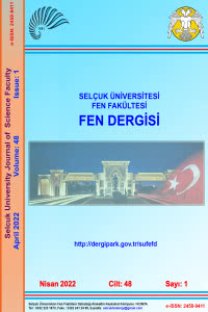Bir Çimento Fabrikası İnşaatı Sırasında Gözlemlenen Zemin Çökmeleri ve Sonuçları
Çökebilen zeminler suya maruz kaldıklarında hacimsel olarak hızlı değişimler gösterirler. Kuzey Azerbaycan'daki bir çimento fabrikası inşaatı sırasında meydana gelen bu tarz bir zemin çökmesi, yapıların kayda değer miktarda oturmasına ve eğilmesine sebep olmuş ve inşaatın yaklaşık 2 yıl kadar gecikmesine sebebiyet vermiştir. Yatırımcı, tamirat işleri ve gecikmeler sebebiyle oluşan ciddi maliyetleri karşılamak zorunda kalmıştır. Zeminin çökme potansiyeli yapılan ilk saha etütlerinde belirlenememiştir. Eğilme ve/veya yapılardaki çatlaklar gibi çökmeden kaynaklı ilk belirtilerden sonra, çeşitli noktalarda uzun süreli oturma ölçümleri alınmış ve yeni, daha detaylı arazi etütleri planlanmıştır. Bu çalışmaların sonuçları, zeminin çökme potansiyelini belirlemek için kullanılmıştır. Literatürde belirtilen dolaylı metotların bazıları ilginç bir şekilde çökme potansiyelini belirleyememiştir. Yapılan araştırma sonucunda, bu tip zeminlerde bazı metotların mühendisleri yanlış sonuçlara yönlendirebileceği; benzer zeminlerde çökme potansiyelini direk metotlarla belirlemenin daha güvenilir bir yöntem olduğu görülmüştür. Bu çalışmanın amacı, projede sırasında bu tip zeminlerin çökme potansiyelinin belirlenmesi konusunda kazanılmış tecrübeleri tartışmak ve hem akademisyenleri hem de bu alandaki profesyonel kişileri benzer zeminlerde, bu tarz çalışmalar sırasında oluşabilecek sorunlar hakkında bilgilendirmektir
COLLAPSE OF BASE SOIL AND ITS CONSEQUENCES DURING A CEMENT PLANT CONSTRUCTION
Collapsible soils are subjected to rapid changes in their volume when inundated with water. Collapse of such a soil deposit during construction of a cement plant in north Azerbaijan resulted in significant settlement and tilting of structures causing a 2 years delay in the construction. The investor had to bear the huge costs of delay and remediation works. The collapse susceptibility of the soil could not be identified during initial site investigations. After first indications of the collapse problem (tilting, cracking of structures) the settlements were measured at different locations for a long time and a new site investigation was executed. The results of these studies were utilized to determine the collapse potential of the soil. Interestingly, some of the indirect methods were not capable of determining the collapse potential. It was seen that, indirect methods may mislead the engineers in such soils and it is more reliable to perform direct tests to determine collapse potential in similar soil deposits. In this study, it is aimed to discuss the experience gained in this project about determining the collapse potential and apprise the professionals as well as academicians about possible problems which may be faced during such studies in similar soils
___
- Ayadat, T., Belouahri, B., 1996, “Influence du coefficient d'uniformité sur l'amplitude et le taux de l'affaissement des sols”, Revue française de géotechnique, Vol. 76, pp. 25-34.
- Ayadat, T., Hanna, A., 2007, “Prediction of Collapse Behaviour in Soil”, Revue Européenne de Génie Civil, Vol. 11, No. 5, pp. 603–619.
- Ayadat, T., Ouali, S., 1999, “Identification des sols affaissables basée sur les limites d’Atterberg”, Revue française de géotechnique, Vol. 86, pp. 53-56.
- Benedini, M., Cleere H., 2005, “Report of the UNESCO-ICOMOS Monitoring Mission to ABU MENA (Egypt)”
- Das, B., 2015, Principles of Foundation Engineering, Cengage Learning, Boston, USA.
- El‐Ehwany, M., Houston, S., 1990, ”Settlement and Moisture Movement in Collapsible Soils”, Journal of Geotechnical Engineering, Vol. 116, No. 10, pp. 1521–1535.
- Feda, J., 1966, “Structural Stability of Subsiding Loess from Prahadejvice”, Engineering Geology, Vol. 1, pp. 201–219.
- Gibbs, H. J., Bara, J. P., 1967, “Stability Problems of Collapsing Soil”, Journal of Soil Mechanics and Foundation Engineering, Vol. 93, pp. 577–594.
- Grigoryan, A. A., 1991, “Construction on Loess Soils”, Soil Mechanics and Foundation Engineering, Vol. 28, No. 1, pp. 44–49.
- Handy, R. L., 1973, “Collapsible Loess in Iowa”, Soil Science Society of America Journal, Vol. 37, No. 2, pp. 281–284.
- Herle, I., Herbstová, V., Kupka, M., Kolymbas, D., 2010, ”Geotechnical Problems of Cultural Heritage due to Floods”, Journal of Performance of Constructed Facilities, Vol. 24, SPECIAL ISSUE: Flood Impact to Heritage Structures, pp. 446–451.
- Hormdee, D., 2008, “Investigation on Collapse Potential of Loess Soil”, Eighteenth International Offshore and Engineering Conference, Vancouver, 579-581, 6–11 July 2008.
- Houston, S., Houston, W., Lawrence, C., 2002, ”Collapsible Soil Engineering in Highway Infrastructure Development”, Journal of Transportation Engineering, Vol. 128, No. 3, pp. 295–300
- Houston, S., Houston, W., Spadola, D., 1988, ”Prediction of Field Collapse of Soils Due to Wetting”, Journal of Geotechnical Engineering, Vol. 114, No. 1, pp. 40–58.
- Larionov, A.K., 1965, “Structural Characteristics of Loess Soils for Evaluating their Constructional properties”, 6 th international Conference on SMFE, Montreal, Vol. 1, 64–68, 8-15 September 1965.
- Lawton, E., Fragaszy, R., Hetherington, M., 1992, ”Review of Wetting‐Induced Collapse in Compacted Soil”, Journal of Geotechnical Engineering, Vol. 118, No. 9, pp. 1376–1394.
- Lin, Z., Liang, W., 1982, “Engineering Properties and Zoning of Loess and Loess-like Soils in China”, Canadian Geotechnical Journal, Vol. 19, No. 1, pp. 76–91.
- Minkov, M., 1977, “Deformation Properties of Bulgarian Loess Soils”, 9th International Conference on SMFE, Tokyo, Vol. 1, 215–218, 11-15 July 1977.
- Priklonski, V.A., 1952, “Gruntoredenia-Vtoraid chest. Gosgeolzdat”, Moscow, U.S.S.R.
- White, D., Mekkawy, M., Sritharan, S., Suleiman, M., 2007, ”Underlying” Causes for Settlement of Bridge Approach Pavement Systems”, Journal of Performance of Constructed Facilities, Vol. 21, No. 4, pp. 273–282.
- ISSN: 2147-9364
- Yayın Aralığı: Yılda 2 Sayı
- Başlangıç: 2013
- Yayıncı: Selçuk Üniversitesi Mühendislik Fakültesi
Sayıdaki Diğer Makaleler
KÜPRİK OKSİT/SİLİSYUM HETEROEKLEMLİ NANODİYOTLARIN FOTOVOLTAİK ÖZELLİKLERİ
FREKANS ANALİZİNDE ALTERNATİF BİR PARAMETRE TAHMİN METODU
A MONOGENIC LOCAL GABOR BINARY PATTERN FOR FACIAL EXPRESSION RECOGNITION
İNSANSIZ HAVA ARAÇLARI: TARİHÇESİ, TANIMI, DÜNYADA VE TÜRKİYE'DEKİ YASAL DURUMU
BİYOKÖMÜR: ÜRETİMİ ve KULLANIM ALANLARI
Halil İbrahim SOLAK, Ayşegül ALAYBEYOĞLU
ERİMİŞ TUZ İÇİNDE ELEKTROKİMYASAL İNDİRGENME YÖNTEMİYLE SİLİSYUM ÜRETİMİ
Metehan ERDOĞAN, Emre ERGÜL, İshak KARAKAYA
Bir Çimento Fabrikası İnşaatı Sırasında Gözlemlenen Zemin Çökmeleri ve Sonuçları
SANTRİFÜJ BİR KALP DESTEK POMPASI PROTOTİPİNİN SAYISAL VE DENEYSEL OLARAK İNCELENMESİ
Güneş Enerjisi Destekli Hidrojen Üretimi: Teorik Bir Vaka Çalışması
